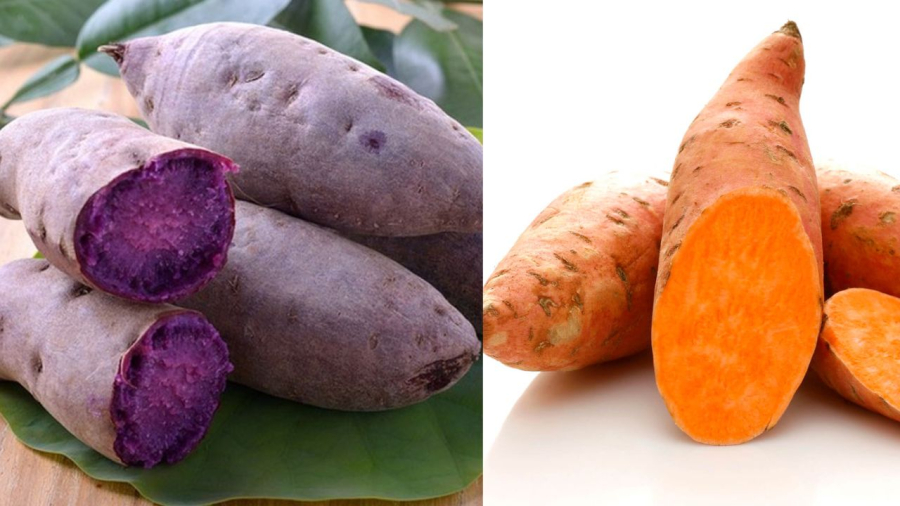Do different colored sweet potatoes have different nutritional values?
Sweet potatoes are a popular root vegetable that is increasingly favored for their nutritional value and are considered healthier than white rice. Sweet potatoes are rich in complex carbohydrates that are slowly absorbed, so they do not cause sudden spikes in blood sugar levels after eating. Sweet potatoes provide the necessary energy for normal cell function without the risk of obesity. According to the US Department of Agriculture, a medium-sized sweet potato provides 23.6g of carbohydrates (8% of daily needs), 103 calories, with no fat or cholesterol.

Different-colored sweet potatoes have different flavors
Sweet potatoes also provide a significant amount of dietary fiber, which helps promote healthy digestion, increase bowel movement, and prevent constipation. Sweet potatoes contain important nutrients such as vitamins A, B, C, potassium, manganese, magnesium, and copper, making them beneficial for preventing viral and bacterial infections…
An average sweet potato contains 30.8g of magnesium, which helps enhance nerve transmission and muscle contraction, and has the ability to prevent and treat nervous disorders and anxiety.
Different colored sweet potatoes have the same basic nutrients, but their taste and nutritional content may vary. However, the main difference lies in their antioxidant content (which gives sweet potatoes their color).
Differences between different colored sweet potatoes
As different sweet potatoes have different nutrient concentrations per unit weight, they will have different flavors when eaten. Sweet potatoes with yellow or orange flesh are sweeter than those with white flesh.

Purple sweet potatoes are rich in anthocyanins, while yellow sweet potatoes are rich in beta-carotene
And the other notable difference is the antioxidant content. Sweet potatoes with orange flesh are very rich in carotenoids, while purple sweet potatoes are rich in anthocyanins. These antioxidants give sweet potatoes their different colors.
Carotenoids are yellow and orange pigments that supply vitamin A, strengthen the immune system, and are beneficial for the eyes, preventing diseases such as ALS (Lou Gehrig’s disease). The most common carotenoids are beta-carotene, lutein, zeaxanthin, and lycopene.
Anthocyanins are natural flavonoids found in red, purple, and blue fruits. According to a study published in the Journal of Food and Nutrition Research, anthocyanins are not only powerful antioxidants, but they also have anti-inflammatory and antibacterial properties, and can help prevent obesity, diabetes, cardiovascular disease, and cancer.
Today, many people prefer purple-colored foods because they contain powerful antioxidants called anthocyanins. Studies comparing the antioxidant content of white, yellow, and purple sweet potatoes have shown that purple-fleshed sweet potatoes have the highest levels of antioxidants and total soluble fiber.
Another study comparing sweet potatoes with white, yellow, and purple flesh confirmed these results. The findings published in the Journal of Preventive Nutrition and Food Science showed that all colors of sweet potatoes have similar levels of polyphenols, but purple-fleshed sweet potatoes have the highest level of anthocyanin antioxidants, while white-fleshed sweet potatoes have the lowest level.
Note that when eating sweet potatoes, pay attention to your gastric reaction, as some people may experience acid reflux after eating sweet potatoes. It is recommended to eat a small amount of other foods before eating sweet potatoes.































